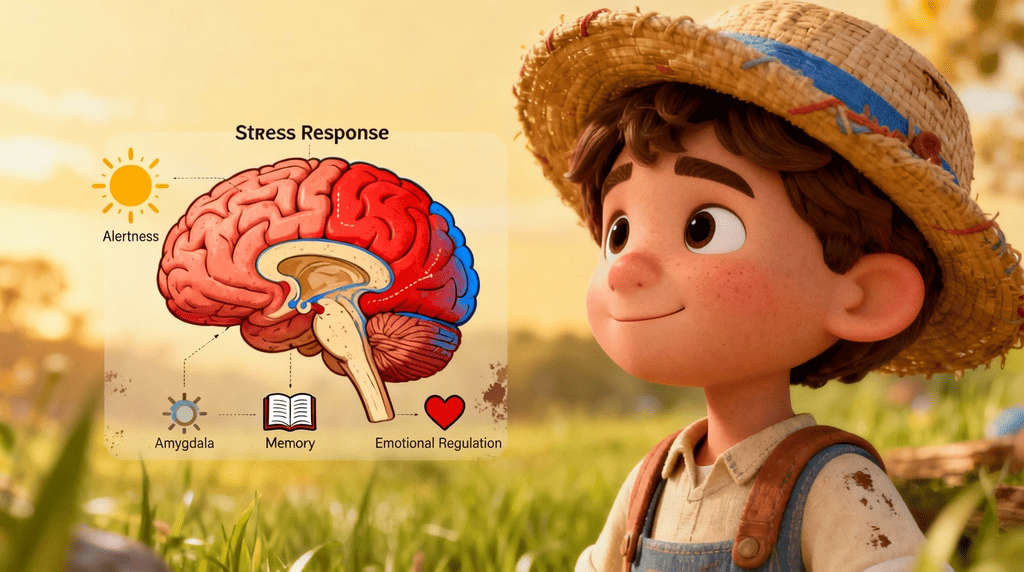How Brain Injury Occurs
Brain injuries are typically caused by a forceful bump to the head. These injuries can result from a variety of causes, both traumatic and non-traumatic. Traumatic brain injuries (TBI) can range from mild concussions to severe cases involving comas and long-term complications. Traumatic injuries are commonly caused by accidents such as:
- Falls
- Car accidents
- Violence
- Sports injuries
Additionally, brain damage can result from non-traumatic, acquired injuries such as:
- Strokes
- Infections
- Prolonged lack of oxygen
It’s important to note that age and gender also play roles in brain injuries. For example, young males between 15 and 24 are at a higher risk than other age groups. Every brain injury is a unique experience, and identifying its root cause is imperative for tailoring appropriate treatments and providing essential support.
Types of Brain Injuries
Brain injuries can be broadly categorised into two types: penetrating and non-penetrating. Penetrating traumatic brain injury occurs when an external object, such as a bullet, impacts brain tissue, typically affecting only a specific part of the brain. On the other hand, non-penetrating TBI, also called closed head injury, is caused by external forces that are strong enough to move the brain within the skull. These forces can result from falls, car accidents, and sports injuries. Brain injuries can also be non-traumatic and associated with internal factors such as meningitis, strokes, or oxygen deprivation.
Traumatic Brain Injuries
Traumatic brain injuries result from head trauma, including closed head injuries, concussions, contusions and penetrating injuries. These injuries vary in severity and can affect brain health and function differently. These injuries often result from:
- Car accidents
- Falls
- Physical assaults
- Sports-related accidents
While some TBIs result in relatively mild symptoms such as dizziness or nausea, others can cause severe symptoms and impact a person’s daily life, necessitating full-time care.
Non-Traumatic Brain Injuries
Internal factors rather than external forces cause non-traumatic brain injuries. Non-traumatic brain injuries can arise from a diverse range of situations, including stroke, which occurs when there is a disruption in blood flow to the brain due to a blood clot or brain bleed.
Brain tumours can also cause non-traumatic brain injuries, varying degrees of damage depending on their type and location. Additionally, brain infections, such as meningitis, can lead to these acquired brain injuries. While the effects of non-traumatic brain injuries may share similarities with TBIs, their distinct origins require a different approach to treatment and strategies for recovery.
What Is Acquired Brain Injury (ABI)?
Acquired brain injury includes a wide range of injuries that occur after birth and are not genetically or congenitally linked. Instead, they result from various neurological conditions and injuries, making ABI a complex and diverse category. These injuries can manifest differently, affecting different brain areas and leading to various symptoms. ABI arises from external factors and events which may occur during a person’s life. Some common causes of ABI include traumatic events like brain haemorrhages, drug abuse, and heart or kidney failure, which can lead to anoxic (lack of oxygen) or hypoxic (low oxygen) brain injuries.
The symptoms and challenges associated with ABI can vary depending on the specific brain structures affected. These can include cognitive, physical, emotional, or behavioural difficulties. Each person’s experience with ABI is unique, and there is no one-size-fits-all approach to its management and rehabilitation. Successful recovery often requires an accurate diagnosis and compassionate treatment tailored to the individual’s needs.
Symptoms of ABI
Acquired brain injury can cause various symptoms that significantly interfere with daily activities and recovery. Therefore, healthcare professionals must identify the specific effects of each individual’s ABI and provide tailored treatment. Since different areas of the brain govern distinct functions, the severity and location of the injury play a crucial role in determining the nature of ABI symptoms and predicting exact outcomes.

Physical Effects
Acquired brain injury can cause various physical symptoms that affect daily life. These symptoms include:
- Headaches
- Numbness
- Loss of coordination
- Spasticity
- Speech difficulties
- Muscle weakness
- Paralysis
- Dizziness
- Epilepsy
Additionally, individuals with ABI may experience:
- Shaking
- Stiffness
- Changes in sleeping patterns
- Alterations in sensory perception (changes in vision, hearing, smell, or touch)
These physical changes can vary in severity and may have immediate or more subtle impacts on a person’s functioning.
Effects on Cognitive and Learning Abilities
Acquired brain injury can significantly impact cognitive and learning abilities, leading to symptoms such as:
- Memory challenges
- Concentration difficulties
- Speech challenges
- Organisational difficulties
- Communication challenges
- Executive dysfunction
- Changes in learning ability
These changes in cognitive and thinking abilities can vary in their extent and may require tailored interventions and support to address the specific challenges faced by individuals with ABI.
Mental and Behavioural Effects
Mental and behavioural effects of acquired brain injury may include symptoms such as:
- Depression
- Anxiety
- Challenging behaviour
- Social anxiety
- Changes in personality
- Irritability
- Mood swings
Since ABI can impact multiple areas of the brain, individuals often experience a combination of these emotional and behavioural symptoms, which can significantly disrupt their daily lives and rehabilitation process. Therapists and physicians play a crucial role in identifying and addressing these effects and tailoring appropriate treatment strategies for individuals with ABI.
Causes of Acquired Brain Injury (ABI)
The causes of acquired brain injury are diverse. Traumatic brain injuries resulting from falls, motor vehicle accidents, or blows to the head can vary in severity and impact. Medical events, including strokes, haemorrhages, and infections like meningitis, also can cause ABI.
Furthermore, other common factors leading to ABI include the following:
- Degenerative neurological conditions such as Alzheimer’s disease, Parkinson’s disease, Huntington’s disease, or Multiple sclerosis
- Toxic substance exposure or poisoning from alcohol or drugs
- The lack of oxygen to the brain, known as hypoxia or anoxia
- Infections, tumours, or unsuccessful brain surgeries
Early identification and diagnosis of ABI is vital to improving the well-being of individuals and their quality of life.

How Is ABI Diagnosed?
The diagnosis of acquired brain injury involves a comprehensive assessment to evaluate the extent of brain damage and determine the most appropriate course of treatment. When a traumatic brain injury is suspected, timely medical attention is essential. Physicians or emergency medical professionals typically employ the Glasgow Coma Scale, a 15-point test, to assess the potential severity of the injury by examining motor responses, eye movements, and verbal responses. A lower score on this scale indicates a more severe injury, while a higher score suggests a less severe one.
Clinical evaluation plays a vital role in the diagnostic process for acquired brain injuries. Computerised tomography (CT) scans are often the initial choice in emergency rooms when TBIs are suspected. These scans utilise X-rays to create detailed cross-sectional images of the brain, offering crucial insights into injuries such as fractures, bleeding (haemorrhage), blood clots (hematomas), and contusions (bruised brain tissue).
Magnetic resonance imaging (MRI) scans, which employ powerful radio waves and magnets, provide a more detailed view of the brain’s structures. These scans are typically used once the individual’s condition has stabilised or if symptoms persist. In cases where tissue swelling is a concern, an intracranial pressure monitor can be inserted to measure pressure within the skull. Additionally, electroencephalography (EEG) can be used to assess blood vessel damage and measure electrical activity in the brain, contributing to a comprehensive evaluation of ABI. These diagnostic tools collectively improve the understanding and management of ABI.
Early and accurate diagnosis is vital for determining appropriate treatment strategies and optimising recovery for individuals with ABI.
Treatment for ABI
The effect of acquired brain injury can be profound, impacting individuals and their families. ABI can disrupt routines and requires significant adjustments to one’s lifestyle and relationships. Emotionally, ABI can lead to various challenges, affecting mood, behaviour, and overall well-being.
Effective treatment for ABI often involves a comprehensive approach, addressing various symptoms and challenges. Medication is one component of ABI treatment, helping to alleviate symptoms, although it may not target the root cause of ABI.
Several treatment strategies include the following:
Therapeutic exercises and activities are crucial in addressing the underlying causes and promoting recovery. These exercises stimulate the brain’s healing capacity and create new neural pathways through neuroplasticity.
Physical therapy focuses on rebuilding mobility, strength, coordination, and balance.
Occupational therapy aids individuals in regaining independence in daily activities, while speech and language therapy improves communication skills.
Cognitive-behavioural therapy effectively addresses emotional and behavioural symptoms, supporting emotional well-being.
Home therapy encourages regular therapeutic exercises between sessions to activate neuroplasticity.
Rehabilitation for acquired brain injury is a gradual process. Improvements often occur in the initial months, but recovery can continue for years. It’s essential to recognise that some effects of ABI may become permanent. Still, with a proper treatment plan, individuals can maximise their independence and improve their quality of life.
How Nurseline Community Services Supports People With ABI
At Nurseline Community Services, we understand the unique challenges individuals with acquired brain injury face, and we are dedicated to providing the tailored support they deserve.
By working together through a collaborative, multidisciplinary approach, we can ensure that no one faces this journey alone, improving the quality of care for every individual we serve.
Our team of highly trained clinicians empower individuals to regain their independence while actively fostering their integration within the local community. With compassion and a person-centred approach, our dedicated clinicians deliver care in the comfort of your own home, always respecting your privacy, dignity, and personal boundaries.
Nurseline Community Services is regulated by the Care Quality Commission (CQC) and available 24/7, providing trusted and proactive care for people with ABI.
Contact us today, or visit our offices in Gloucester, Bristol, and Birmingham to discover how we can assist you on your path to recovery and independence.




